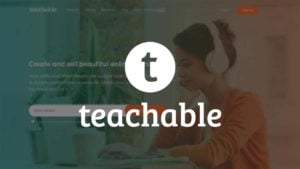- The humanistic approach to learning is based on the idea that human beings are inherently good and intrinsically motivated.
- According to the Humanistic Learning Theory, students should be responsible for setting their goals and evaluating their progress.
Our main goal as educators is to help our students thrive to increase the possibility of each student reaching their full potential. We want our kids to become functional adults, confident in their abilities, and contributing to the community. The humanistic approach to learning shares the same ideals and goals. Unlike some of the learning theories popular today, this approach focuses on educating the student’s “whole being,” not just the intellect.
So, what does it mean to educate the “whole being”? In this article, we’ll discuss Humanism and how it applies to education. In addition, we’ll look at the benefits and drawbacks of the Humanistic Learning Theory and how this approach can be applied in the online classroom.
Table of Contents
What is Humanism?
Humanism is a philosophy that can be traced back to Ancient Greece. It is based on the idea that people are inherently good. The only reason why people do bad things is because their needs aren’t met. Humanism also places importance on human dignity and values – everyone has worth. Moreover, it believes that humans have the ability to control their environment, shaping it according to their needs. It further believes that a person’s potential for growth and development is unlimited.

What is the Humanistic Learning Theory?
So, what does humanism have to do with learning? Well, humanism’s view on education can be broken down into several foundations:
- Free will: Everyone has the freedom to do what they want.
- Innate goodness: Everyone is innately good “at the core,” and we will always want the best for ourselves and for others.
- Positive emotions: Feelings cannot be separated from intellect. A person needs to feel positive and relaxed in order to be open to learning and achieve the best results.
- Intrinsic motivation: Humans are born with the motivation to become the best version of themselves.

Based on these philosophical pillars, we can define what Humanistic Learning Theory is all about. First, it is an approach to education that is centered on the learner. The learner has freedom and autonomy. This means that much of what a person learns and how he learns is based on his choice, not on the teacher’s preferences.
Second, student-centered education includes student-led evaluation, which means that students are responsible for evaluating their progress. When evaluation is based on a grading system, students are encouraged to work hard to earn a high grade instead of being passionate about what they’re learning. According to this theory, rote memorization and routine testing do not promote learning. Self-evaluation, on the other hand, enables students to feel satisfaction and excitement about what they’ve accomplished. Students will focus on improving themselves based on the standards that they have set.
In addition, we all have an intrinsic desire to become our best selves. According to the Humanistic Learning theory, this means that students need to be engaged in the learning process. The desire to learn should come from the students. This means that teachers need to cultivate their curiosity and encourage them to pursue their interests. Once motivated, students will become active participants in the learning process and develop a love for learning.
Moreover, since we are all fundamentally good, teachers who use this approach should not view students who misbehave as “bad.” They also do not dole out punishments or negative feedback in order to fix or correct a behavior. Instead, they need to determine which needs aren’t being fulfilled, causing this type of behavior and preventing the student from reaching his full potential.
Educating the person as a whole
Learning, as defined by this theory, is the growth of a person as a whole. This means that the learning process needs to consider more than just the knowledge a student needs to acquire. The learner’s needs and desires, as well as his emotional state, are equally as important because these can impact learning.
In addition, to unlock a learner’s full potential, teachers need to consider and educate the “whole” person. Teachers should focus on both cognitive and affective learning, putting equal importance on feelings, artistic skills, social skills, self-esteem, and practical skills. Learning is not just about intellect.
Let’s make it easier to understand: When a student is feeling anxious or upset, it’s highly likely that he won’t be able to pay attention in class. Not only could this become a hindrance to the learning process, but it can also cause them to behave badly. Teachers will need to teach students how to deal with anxiety and how to overcome negative emotions in order for them to perform well. In addition, they need to create a learning environment where students feel safe and comfortable.
Here’s an example: Hunger, a basic human need, can affect a student’s attention, making it difficult for him to understand and/or engage in learning activities. This means that schools need to make sure that students are getting their basic needs met while they’re within the halls of the institution (for example, by providing meals in the cafeteria).
Advantages of the humanistic approach to learning
Applying the Humanistic Learning Theory in the classroom has several advantages:
- It promotes positivity in the classroom.
- This approach empowers students to motivate themselves to become the best version of themselves.
- Unlike many other learning theories, the Humanistic Learning Theory is a holistic approach that considers the emotional state of the students and how this can affect their learning.
- The humanistic approach to learning is inclusive of everyone. Learning is focused on the individual, not the group, giving every child the opportunity to succeed.

Disadvantages of the Humanistic Approach to Learning
Like other learning theories, there are also disadvantages to using this approach in the classroom:
- Because the source of authority is the student, the curriculum needs to be less fixed, which may not be compatible with traditional schools.
- This approach requires students to pursue their interests. However, not everyone will have an intrinsic desire to study subjects like mathematics and physics, potentially setting them up for future challenges.
- Routine and structure are necessary for some students to learn effectively. Freedom of choice and authority in learning may not be suitable for these students.
Applying the Humanistic Learning Theory in the online classroom
Because learning is student-centered, the role of the teacher is to be a facilitator and model. The teacher is responsible for helping students develop learning skills, feel motivated and engaged, and provide them with different topics, materials, and tasks to choose from. As a facilitator, teachers also need to create opportunities for students to work with their peers to practice social as well as practical skills.
Some examples of implementing the key principles of humanism in the online classroom include:
- Teachers can help students create goals at the start of the school year. Make sure that you take time to discuss what they want to achieve and how they can achieve them.
- Provide different learning opportunities that cater to the interests and learning styles of the students. For example, students can choose to complete practical activities, watch videos, conduct research on the web, and/or participate in online discussions (e.g., social media interaction, online forums).
- Use gamification to increase engagement and motivation. Instead of prizes, students go up levels and earn experience points, which can help promote a student’s intrinsic desire to improve. In addition, levels and experience points make it easier for students to evaluate their progress. Moreover, this can help them develop a love for learning.
- Give students flexibility in their schedules and modes of participation. Some students learn better in the morning, while others are more efficient later in the day. Some may want to join an online class, while others prefer to do their online lessons on their own. Teachers can look for adaptive software that allows independent self-paced study. Doing this also encourages independent responsibility.
- Create a safe, comfortable learning environment by allowing students to take snack and bathroom breaks when they need them. In addition, encourage them to evaluate and share their feelings because these can impact learning. Cultivate a classroom culture where everyone is accepted and emotional experiences can be shared through honest discussions. If needed, you can create a safe or brave space where they can tell you how they feel privately, such as a breakout room in Zoom.
- Integrate problem-based learning and inquiry-based learning techniques to help students practice critical thinking and feel a sense of accomplishment. Don’t forget to celebrate their milestones to give them recognition and increase their motivation.
- Practice empathy and respect. Prepare for moments when students are experiencing high levels of stress or anxiety. Be ready to listen and become a support system. This may be harder when classes are conducted online; the distance can feel like a barrier. Developing a good relationship with the students and keeping in touch with them online outside of school hours can help them trust you with their feelings.
Conclusion
The Humanistic Learning Theory tells us that learning goes beyond the intellect. The focus is on the student and helping him reach his full potential. The greatest contribution of this theory in the classroom is that it promotes independence, a love for learning, and a motivation for self-growth. As teachers, it is our privilege to help them become the best version of themselves, confident people who make meaningful contributions to our society.



